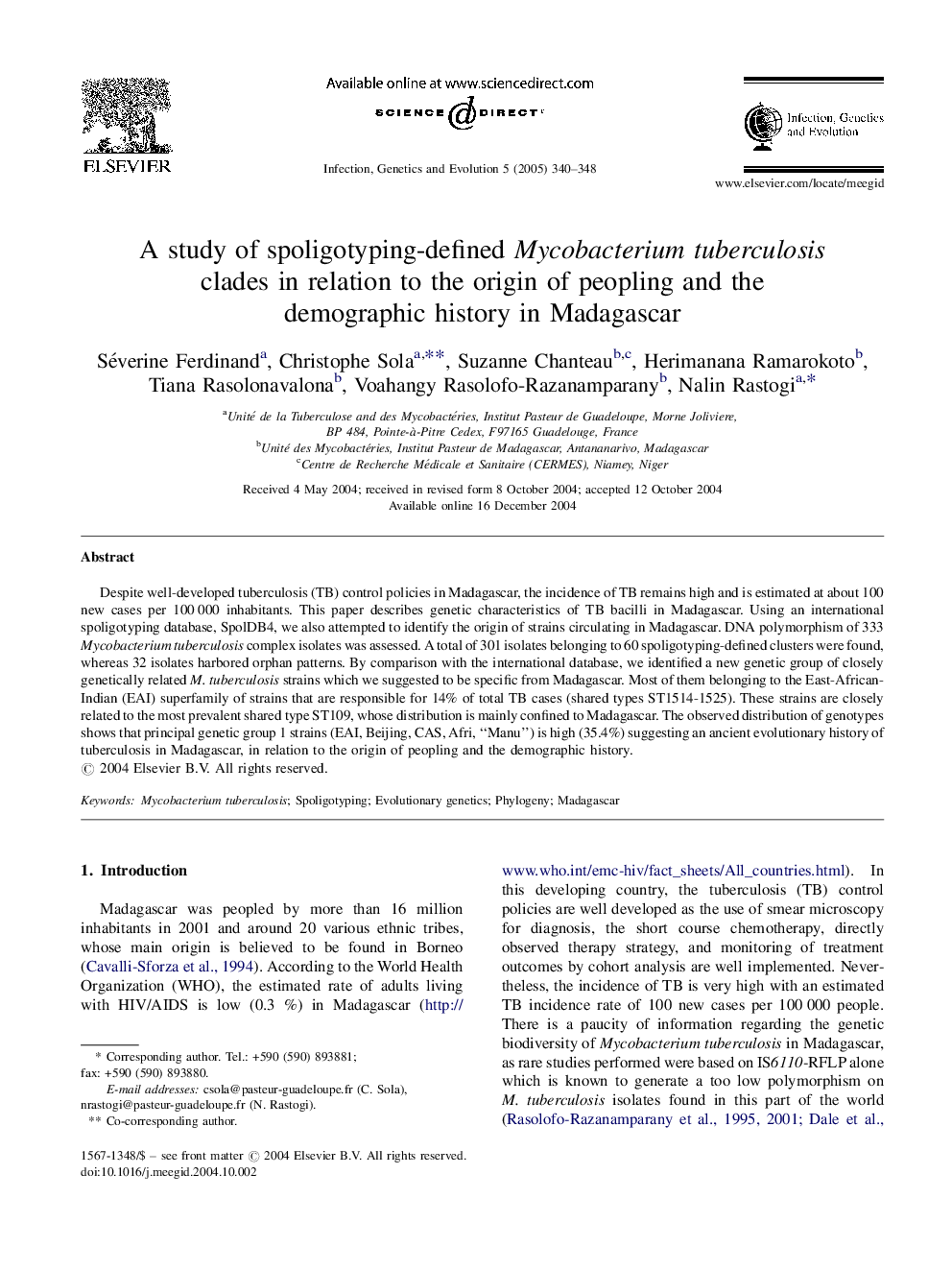| Article ID | Journal | Published Year | Pages | File Type |
|---|---|---|---|---|
| 9133464 | Infection, Genetics and Evolution | 2005 | 9 Pages |
Abstract
Despite well-developed tuberculosis (TB) control policies in Madagascar, the incidence of TB remains high and is estimated at about 100 new cases per 100Â 000 inhabitants. This paper describes genetic characteristics of TB bacilli in Madagascar. Using an international spoligotyping database, SpolDB4, we also attempted to identify the origin of strains circulating in Madagascar. DNA polymorphism of 333 Mycobacterium tuberculosis complex isolates was assessed. A total of 301 isolates belonging to 60 spoligotyping-defined clusters were found, whereas 32 isolates harbored orphan patterns. By comparison with the international database, we identified a new genetic group of closely genetically related M. tuberculosis strains which we suggested to be specific from Madagascar. Most of them belonging to the East-African-Indian (EAI) superfamily of strains that are responsible for 14% of total TB cases (shared types ST1514-1525). These strains are closely related to the most prevalent shared type ST109, whose distribution is mainly confined to Madagascar. The observed distribution of genotypes shows that principal genetic group 1 strains (EAI, Beijing, CAS, Afri, “Manu”) is high (35.4%) suggesting an ancient evolutionary history of tuberculosis in Madagascar, in relation to the origin of peopling and the demographic history.
Related Topics
Life Sciences
Agricultural and Biological Sciences
Ecology, Evolution, Behavior and Systematics
Authors
Séverine Ferdinand, Christophe Sola, Suzanne Chanteau, Herimanana Ramarokoto, Tiana Rasolonavalona, Voahangy Rasolofo-Razanamparany, Nalin Rastogi,
